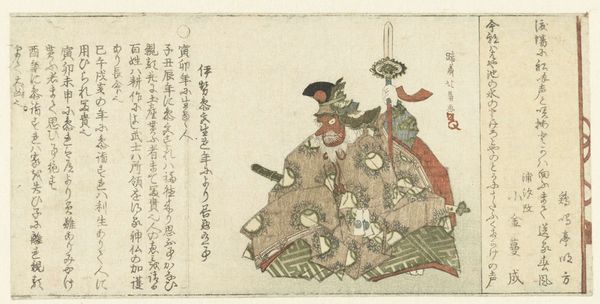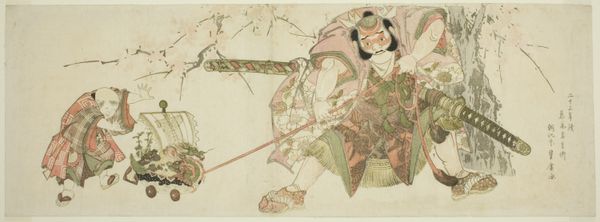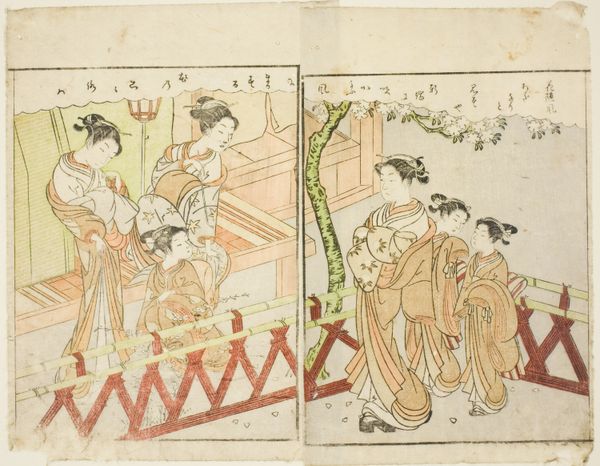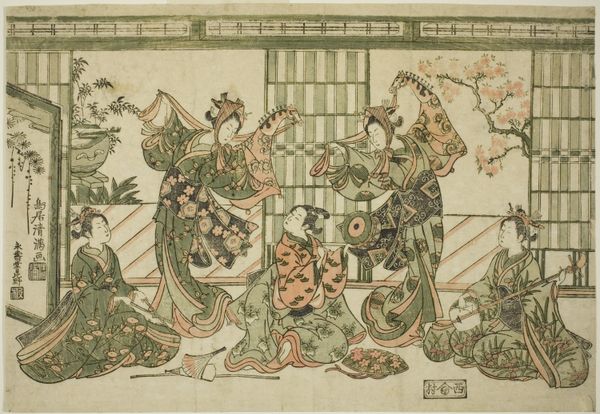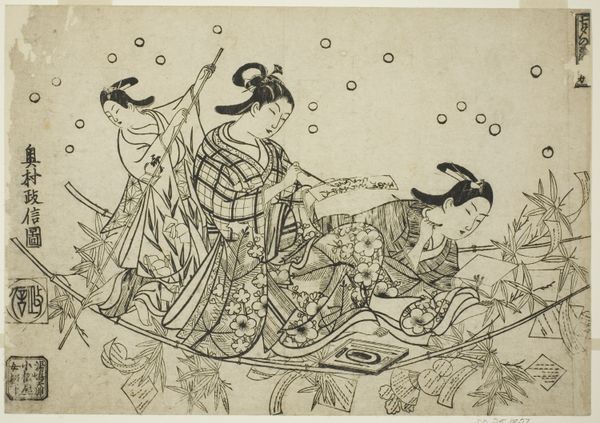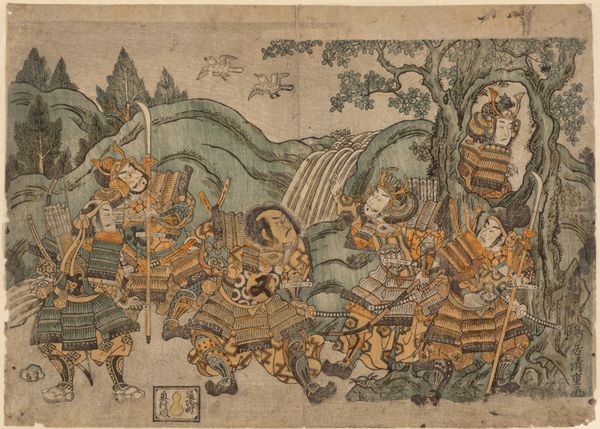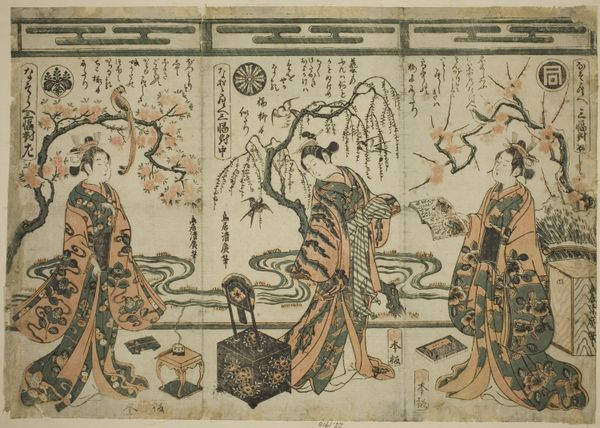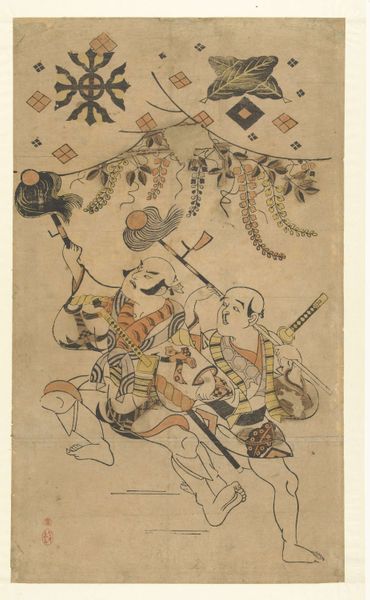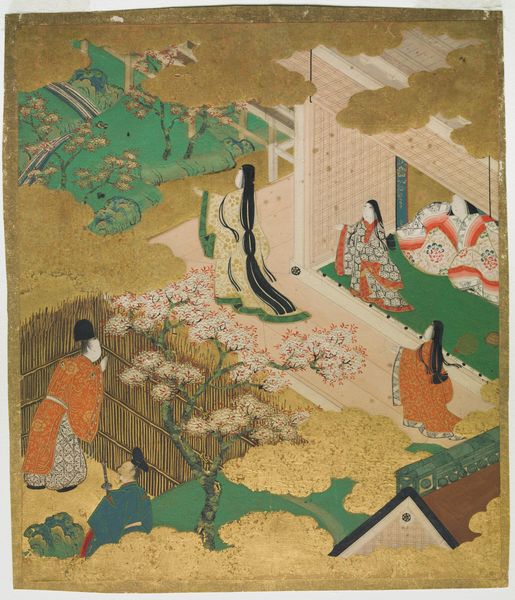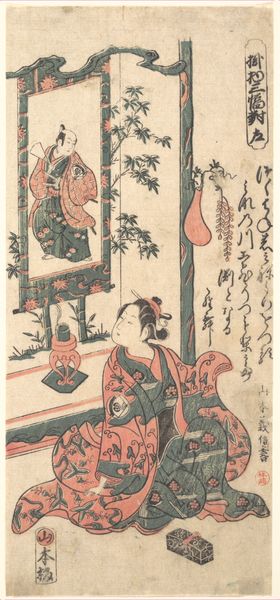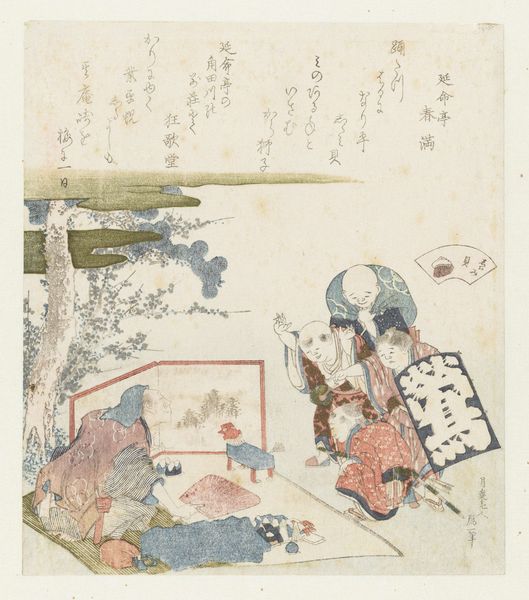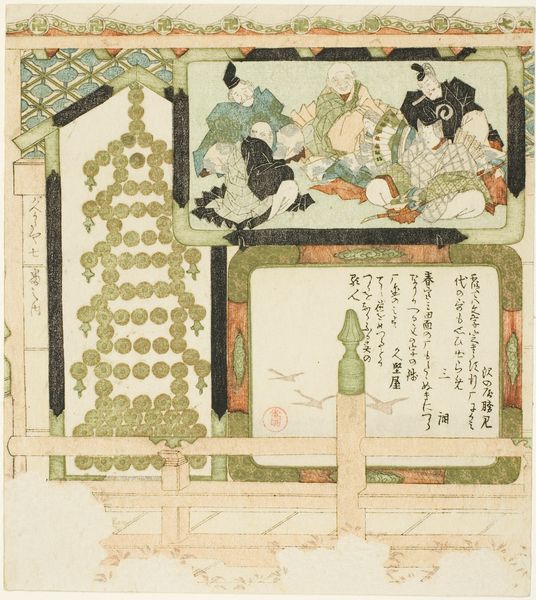
print, woodblock-print
#
narrative-art
# print
#
asian-art
#
ukiyo-e
#
figuration
#
woodblock-print
Dimensions: height 138 mm, width 186 mm
Copyright: Rijks Museum: Open Domain
Curator: What a peculiar and compelling scene! This woodblock print, titled "A Painting of a Hare and a Badger," was created in 1807 by Hishikawa Sōri and is now held here at the Rijksmuseum. It’s fascinating in its depiction of animals acting very much like humans. Editor: Yes, striking! The contrast between the delicate, pale palette and the almost violent, exaggerated gestures of the figures immediately grabs attention. I'm intrigued by the printmaking process itself. It feels very handmade. I'm curious, how many blocks might have been used to achieve these colors? Curator: The ukiyo-e tradition certainly emphasizes handcraft. We have evidence to suggest that multiple blocks were used, one for each color layer, potentially as many as four or five here, each meticulously carved. The skill involved in aligning them perfectly is astounding, especially considering the societal role of printmaking in disseminating imagery and stories more broadly at the time. Editor: That's fascinating! It feels almost subversive seeing such traditional techniques applied to a narrative that features these anthropomorphic figures, particularly with the presence of those bats, their weapons of what seems like to be either for labor or protection. Are there common themes around hares and badgers in the visual culture of this period? Were the artists of this era highlighting social satire? Curator: Indeed, these figures do suggest a societal critique. In Japanese folklore, both the hare and the badger hold symbolic weight. The hare is often portrayed as clever, though sometimes a trickster. The badger too is viewed through similar archetypes. I speculate that the context and public role of art during this time encouraged artists to find clever ways to engage viewers with sometimes controversial subject matters by embedding their commentary within animal fables. Editor: That adds so much richness. I appreciate how Sōri used this medium and the animals to hint at broader societal discussions, the process involved is critical, since the woodblock-printed copies could be reproduced on demand in vast quantities to reach an ever growing public sphere. Thank you for giving new context and insight into how print-making allows for unique production qualities and clever imagery. Curator: A worthwhile reflection for me too. To see art that reveals narratives about a culture while simultaneously providing clues to its manufacture gives a tangible historical reality.
Comments
No comments
Be the first to comment and join the conversation on the ultimate creative platform.
